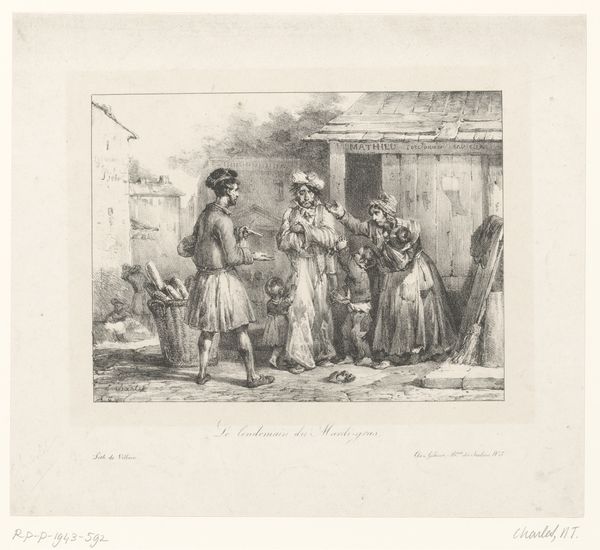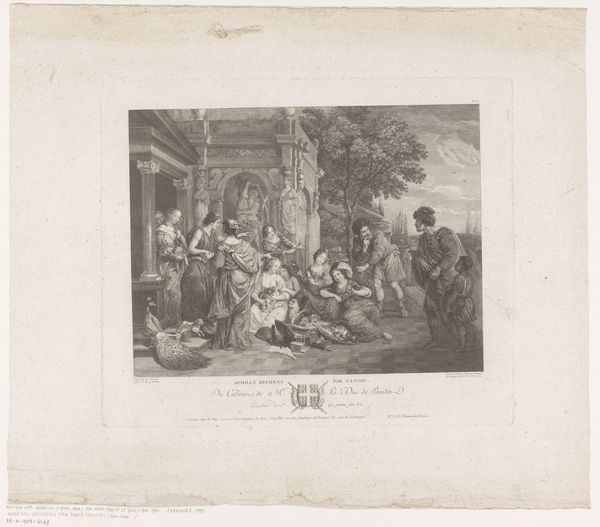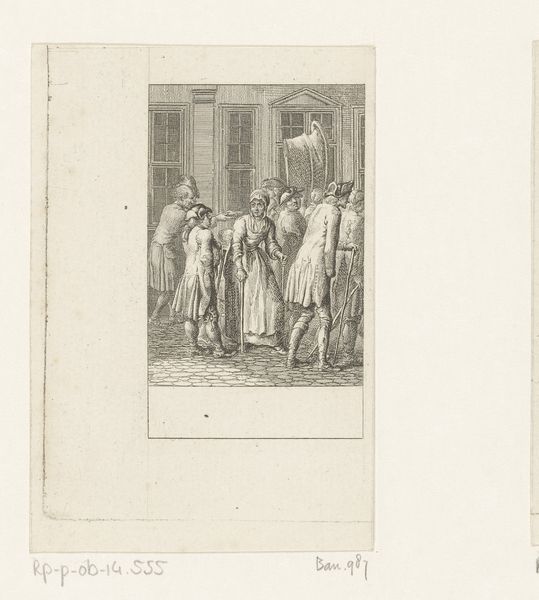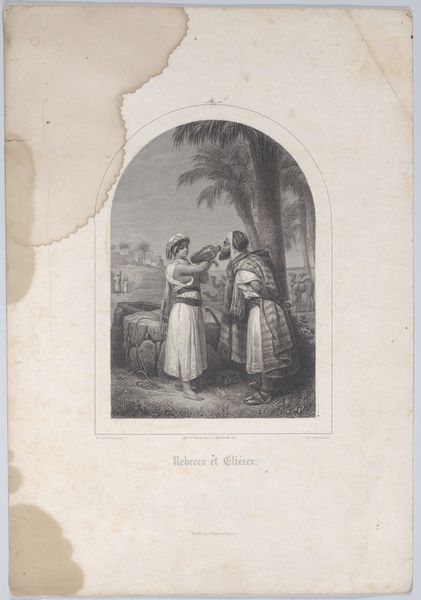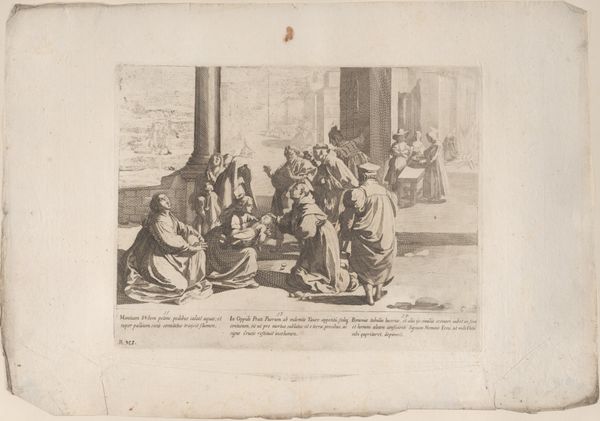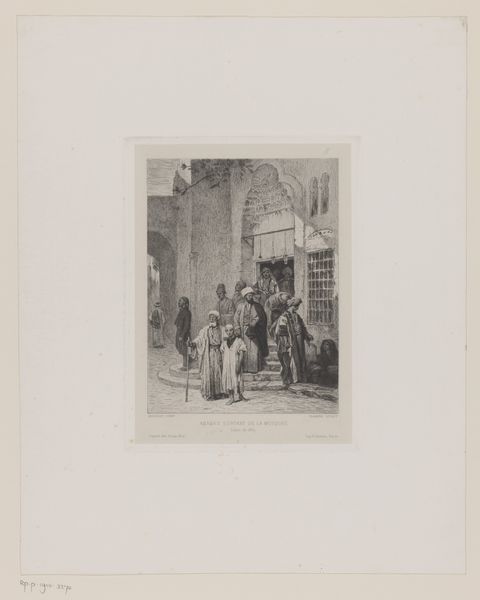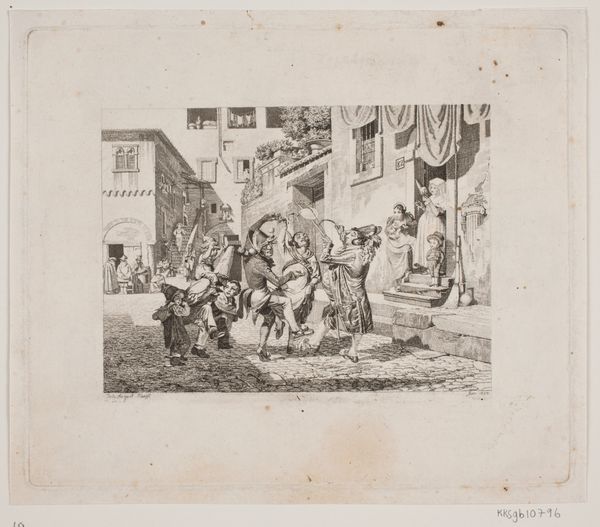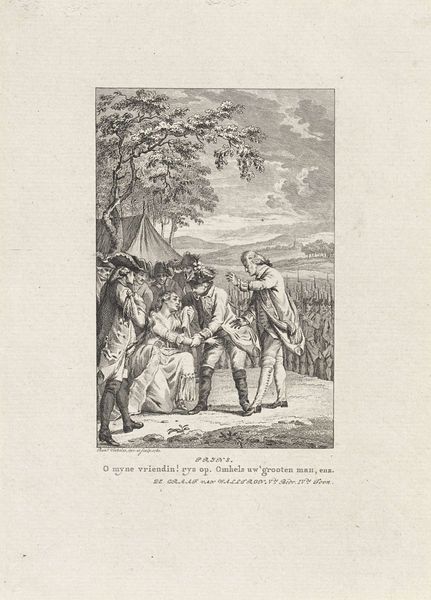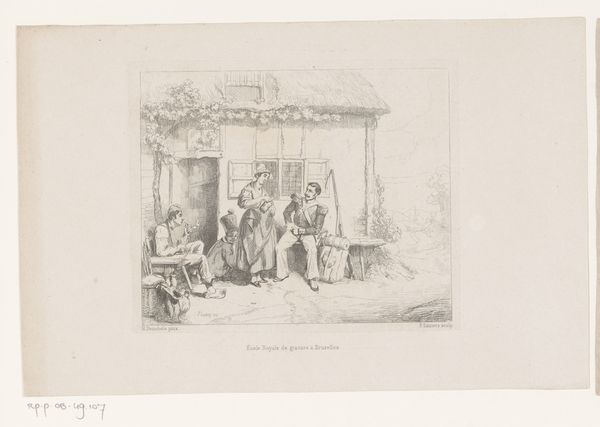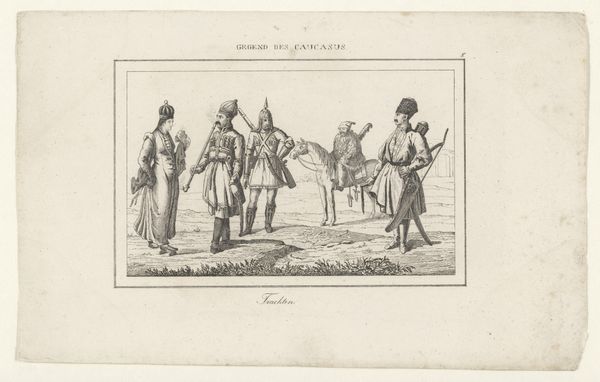
Dimensions: height 416 mm, width 577 mm
Copyright: Rijks Museum: Open Domain
Curator: This is Horace Vernet's print, "Soldaat Jacques Grivet viert de vrede, 1797," created between 1818 and 1819. It's a lively scene, mostly done with engraving and drawing techniques. What's your immediate reaction? Editor: It feels like a staged moment of camaraderie. Everyone’s striking a pose, almost theatrical, in the way they engage with one another after what I understand is the declaration of peace, celebrating it. But also, slightly artificial in the rendering—striving, it seems to me, for historical gravitas, but teetering instead to caricature. Curator: Well, the staging makes sense when you consider its likely intended audience. Vernet was adept at crafting narratives that reinforced specific ideas of patriotism and virtue, crucial for consolidating power in post-revolutionary France, in a post-Napoleonic context for that matter. So, the camaraderie might be more of a symbolic promotion. Editor: I see that angle clearly! Note that the broken plank, or maybe it is an unused door that is almost like an altar! What is being ‘consumed’ on top? How many libations have these ‘patriots’ poured. There is this need to always sanctify victory, create rituals for celebration which include the vanquished too. Curator: I agree about that plank altar and spilled libations that accompany military might. Here’s what seems very revealing. The central figure raises his arms high in the iconic posture we will later associate with photographs of conquering soldiers, a theme he will explore throughout his life, to his association with photographing the Crimean War. These iconographic patterns of domination are being embedded even here. Editor: Precisely! This visual language echoes far beyond this particular print. Look also at how he's including, visually, what looks like common villagers on the sides! Almost literally making them complicit, with celebratory music accompanying the main actors. How does the presence, I wonder, or inclusion, of ordinary folk bolster the heroic narrative that the scene otherwise struggles to convey on its own? Curator: In Vernet's time, these representations served to normalize military culture, to embed it in the fabric of daily life. These inclusions were meant to imply shared cause. Consider the sociopolitical ramifications of portraying citizens swept up in the celebration of military victory. It definitely bolstered and gave the political-military class, in those decades, further impunity. Editor: Fascinating. And from that angle, what at first appeared staged and artificial reveals a deliberate ideological purpose. Vernet isn't merely depicting a scene, he's actively shaping cultural memory, to legitimize an action like war. Curator: Exactly, framing military celebration as a collective aspiration helps solidify control and cultivate a unified national identity under any government. Something that he perfected. Thank you, these few moments opened the discussion on the cultural effect that Vernet achieved in making sure war finds easy approval within ordinary folk!
Comments
No comments
Be the first to comment and join the conversation on the ultimate creative platform.
